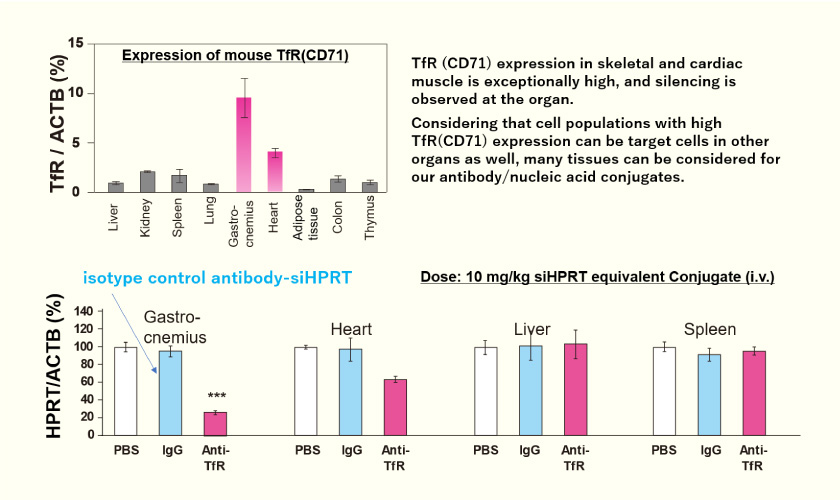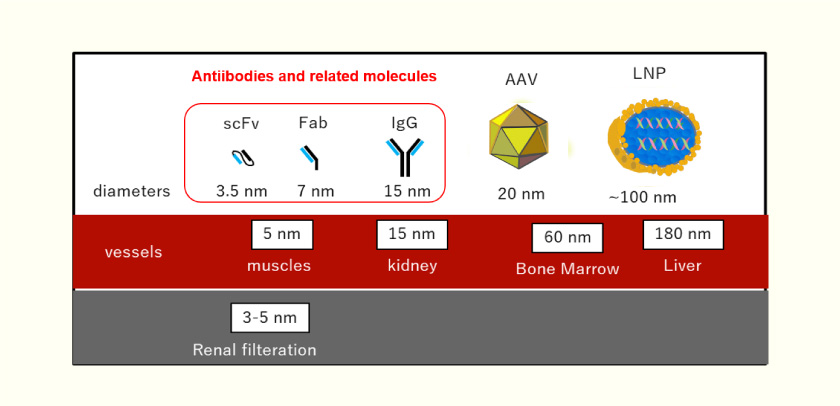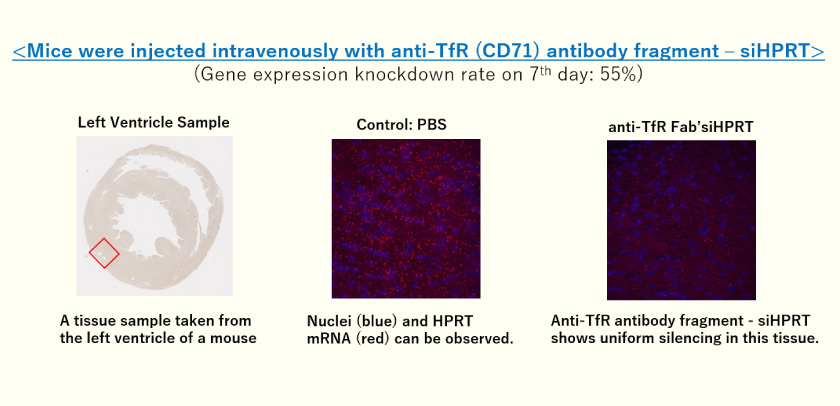TfR is expressed ubiquitously in many organs
- We were the first to report that anti-TfR antibody-nucleic acid conjugates can deliver nucleic acids to muscle tissue.
Development of Antibody-siRNA Conjugate Targeted to Cardiac and Skeletal Muscles
Journal of Controlled Release 237, p1-13, 2016.

Cellular Uptake and Intracellular Trafficking of our Conjugates
- Our anti-TfR (CD71) antibody (fragment) nucleic acid conjugates can escape from endosomes after being taken up into the cell by endocytosis.

Size
- Our anti-TfR antibody (fragment) nucleic acid conjugates are small enough (diameter: 3.5-15 nm) to pass through capillary walls and reach and penetrate target tissues.
- Compared to Lipid Nanoparticles (LNPs ~100 nm), which are large enough to leak only through the sinusoidal endothelial cell pores common in the liver, our anti-TfR antibody (fragment) nucleic acid conjugates can target a variety of organs.
- However, its size is such that it can escape kidney elimination.

Permeability
- The size of the antibody fragment (Fab’) is about 7 nm, larger than the peptide (2-4 nm) and smaller than the whole antibody (15 nm). The particle size of the antibody fragments is larger than the filtration limit of the kidney (3-5 nm).
- Antibody fragments (Fab’) are smaller than whole antibodies and have higher tissue permeability.
- From the data below, we understand that our Fab’-siHPRT penetrates the left ventricle, a thick tissue, and uniformly suppresses gene expression.

